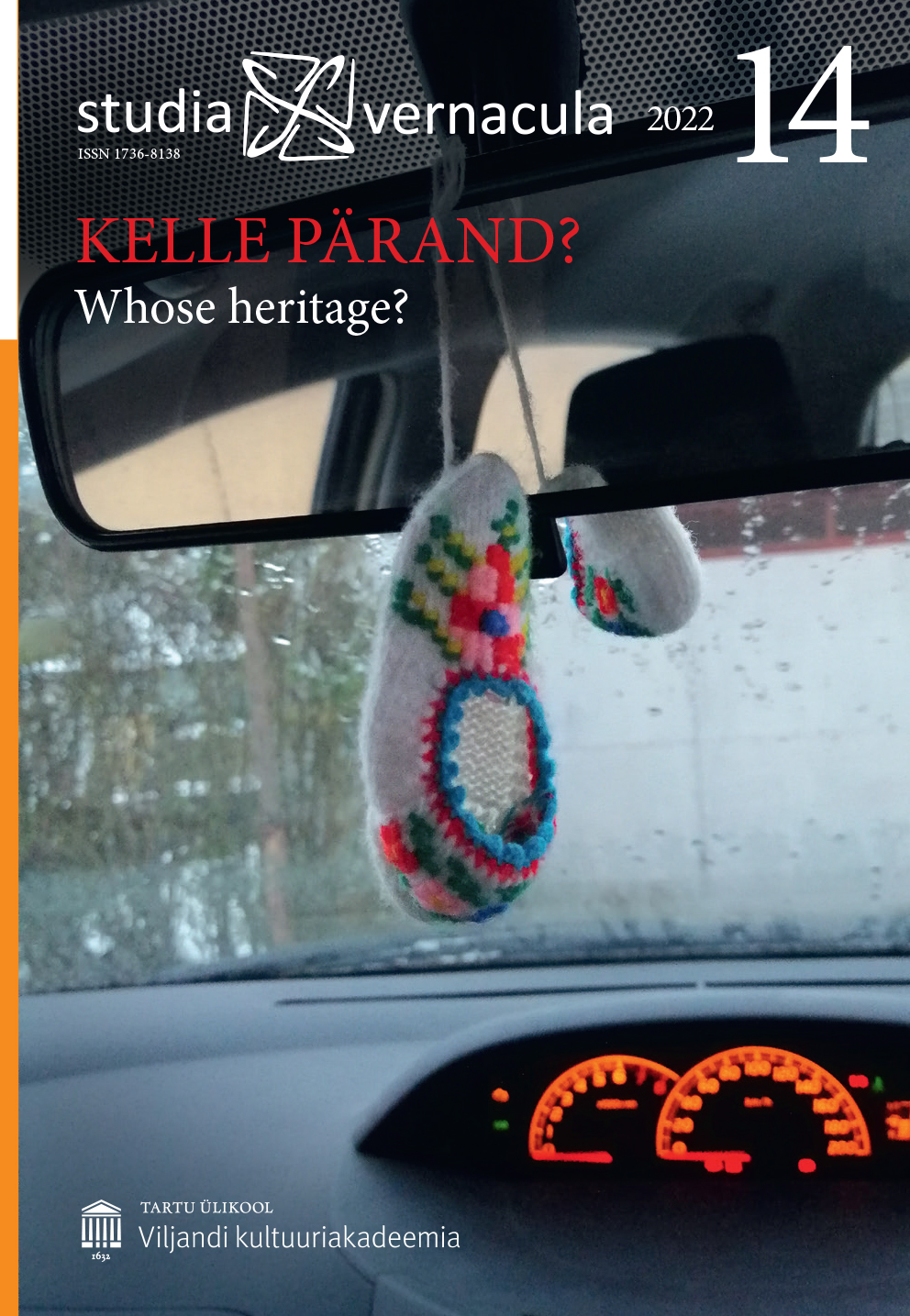Nööbiliistuga särk – rahvarõivas või linnamood? / Historical shirt with a front placket – folk costume or urban fashion?
DOI:
https://doi.org/10.12697/sv.2022.14.150-170Abstract
The Estonian National Museum holds an 800-piece collection of historical shirts. In this article, 154 shirts with a front placket were studied. The main question that arose was whether each individual shirt could be considered an item from a specific folk costume period, or as pieces of urban fashion. Clothes worn in the urban fashion period were no longer distinguishable by the wearer’s parish of origin as opposed to the folk costume period.
Shirts with a front placket have previously never been thoroughly researched in Estonia. There are no instructions on how to remake them. My interest in shirts constructed this way began when I started to remake a shirt from Helme parish ERM 18444 (photo 1). This particular shirt was constructed in an unfamiliar way. When nowadays we construct the front placket using extra strips of fabric, the front placket of this shirt was constructed by rolling and hemming the edges of that same front piece. In doing so, a wide opening was left underneath the front centre cut, which was then folded and covered with a small piece of fabric (drawing 2). Distinctive pattern pieces of such shirts are shown on drawing 1 and can be translated as navel patch (nabalapp) and chest patch (rinnalapp). The classification of front placket types on Estonian historical shirts can be seen in drawings 4.1–4.6. Construction differences of these plackets are based on the method of folding the redundant fabric after the front centre cut and hemming. The method for researching and drawing the folds of museum artefacts is shown on drawing 3.
Estonians have a cherished culture of remaking 19th century festive peasant clothes as folk costumes. This tradition has evolved over 140 years, making folk costume a very important cultural construction. It began in the 1880s during the process of our national awakening and grew with the twists and turns in Estonian history: from becoming an independent country in 1918, to losing our independence during World War II, and then restoring it in 1991. The last twenty years have brought with them a tendency to research museum artefacts with more craft-based methods and pursue authenticity when making folk costumes.
Nevertheless, we still lack a method for drawing a line between the folk costume period and urban fashion. It is even more difficult, considering that some regions held onto their traditional clothing longer than others and older people often wore clothes considered out of fashion by the younger generation. This can be seen in a photograph (photo 2) from my family’s album from around 1918, where my great-great-great-grandmother Kadri (born in 1868) is sitting in front with a striped woollen skirt and dark blue woollen jacket and my great-great-grandfather Julius is sitting to the left of her and wearing a front placket shirt with his initials embroidered on the navel patch.
To fill this gap in determining whether a historical item is a folk costume or not, I developed a method consisting of three conditions:
1) the time of wearing the folk costumes in a region compared to the year the item was made;
2) the existence of regional specifics on that item, mostly embroidery;
3) the use of technologies and materials that are true to the historical time frame.
Each of theseelle pärand? conditions would gain or lose a point and the artefact would be considered folk costume if two out of three points were collected.
According to the developed method, 106 shirts out of 154 were folk costumes, which is a surprisingly large number. I cannot say whether such a method will help other researchers, but for me it made the decision more transparent.
Since there are 646 shirts at the Estonian National Museum that were not included within the scope of this research, it is my hope that this study is only the beginning in the craft-based research of folk costumes at the Estonian National Museum and in general.
Keywords: folk costume, sewing, front placket, method of determining folk costume

